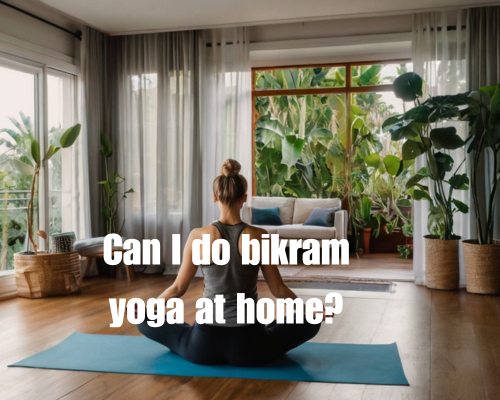If you’re a fan of Bikram yoga, you may be wondering if it’s possible to practice this type of yoga at home. The good news is that it is possible to do Bikram yoga at home, but there are a few things to keep in mind before you get started.

Jane Benson of Bikram Yoga Mornington highlights that “It is important to understand what Bikram yoga is all about. This style of yoga is practiced in a room that’s heated to around 105 degrees Fahrenheit, with a humidity level of 40%.”
It consists of a series of 26 postures and two breathing exercises. Bikram yoga is designed to work every part of your body, from your muscles to your internal organs. While the heat can be intense, it’s also believed to help improve flexibility and detoxify the body.
Setting Up Your Home for Bikram Yoga
Creating the Right Environment
To practice Bikram yoga at home, it is essential to create a suitable environment that mimics the conditions of a heated studio. A heated space with a temperature of around 105°F (40°C) and humidity levels of 40% to 60% is ideal.
Designate a space in your home that is free of clutter and has enough room for your yoga mat and any necessary equipment.
Choose a focal point in the room, such as a painting or a plant, to help you stay focused during your practice.
Consider installing a body-length mirror in the room to check your alignment during poses. A mirror can also help you monitor your progress over time.
Essential Equipment and Accessories
To practice Bikram yoga at home, you will need a few essential pieces of equipment and accessories.
First and foremost, you will need a yoga mat that provides good traction and support. Look for a mat that is specifically designed for hot yoga and is made of non-slip material to prevent slipping and sliding during your practice.
A yoga towel is also essential to help you stay dry and prevent slipping on your mat. Look for a towel that is made of absorbent material and is the same size as your yoga mat.
A space heater can be used to increase the temperature of the room to the desired level. Meanwhile, a humidifier can also be used to increase humidity levels if necessary.
Make sure to have a water bottle nearby to stay hydrated during your practice. It is also a good idea to have a small towel to wipe away sweat.
Executing a Safe and Effective Bikram Yoga Practice
“When practicing Bikram Yoga, it is essential to execute it safely and effectively to avoid injuries and maximize the benefits of the practice.” said Jane Benson of Bikram Yoga Mornington.
Here are some tips to ensure a safe and effective Bikram Yoga practice.
Understanding the 26 Postures and Breathing Exercises
Bikram Yoga consists of 26 postures and two breathing exercises, performed in a heated room at 105°F for 90 minutes. The sequence of the postures is designed to stretch and work all muscle groups, tendons, and ligaments in the body.
It is important to understand the correct alignment and technique of each posture to avoid injuries and get the most benefit from the practice.
To execute the postures safely and effectively, it is recommended to attend a few classes with a certified Bikram Yoga instructor before practicing at home. This will help you understand the correct alignment, technique, and flow of the postures.
Health Benefits and Precautions
Bikram Yoga offers numerous health benefits. These include improved flexibility, tone, and range of motion. It also helps detoxify the body, improves blood circulation, and strengthens the nervous system.
However, it is essential to take some precautions to ensure a safe practice.
One of the most important precautions is to stay hydrated before, during, and after the practice. It is recommended to drink at least 16 ounces of water 2 to 3 hours before the practice. Also, sip water throughout the class and avoid eating a heavy meal at least 2 hours before the practice.
It is also important to listen to your body and not push beyond your limits. Do not force yourself into a posture if it causes pain or discomfort. Instead, modify the posture or take a break in Savasana (corpse pose) until you feel ready to continue.
Lastly, if you have any injuries or medical conditions, consult with your doctor before practicing Bikram Yoga. Some postures may not be suitable for certain injuries or medical conditions, such as arthritis or high blood pressure.